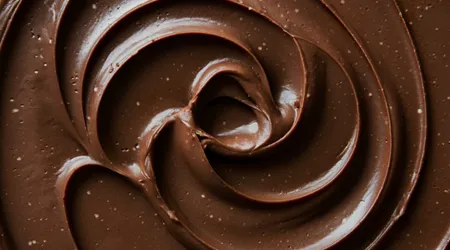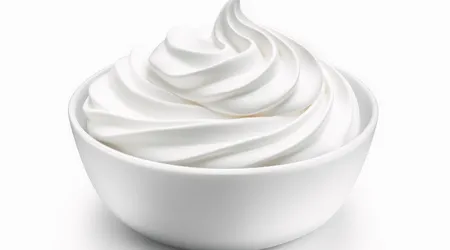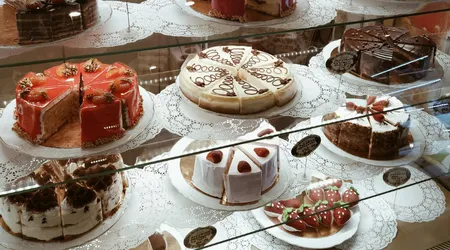How to get a smooth cream
How to get a smooth creamThe search for a smooth, velvety, and flawless cream is a goal shared by chefs, pastry chefs, and cooking enthusiasts.
Announcements
Whether it's a custard for an elegant dessert, a béchamel sauce for a savory dish, or a chocolate ganache to decorate a cake, achieving the perfect consistency is a true art.
But how do you get a smooth cream?
In this article, we'll explore advanced techniques, practical tips, and innovative strategies for achieving professional results, avoiding common mistakes, and making the most of every preparation.
How to get a smooth cream

The consistency of a cream isn't just an aesthetic issue: it's crucial to the flavor, sensory experience, and even the presentation of the dish.
Announcements
A smooth cream conveys care, precision, and mastery, while a lumpy or uneven texture can ruin even the most refined dessert.
For this reason, we will delve into every aspect of the process, from choosing the ingredients to managing the temperature, up to mixing techniques.
Get ready to discover how to transform any cream into a velvety masterpiece!
Why is a smooth cream so difficult to achieve?
This rhetorical question invites us to reflect on the importance of combining science, technology, and creativity.
With the right approach, it is not only possible, but it also becomes a rewarding process.
++ Whipping Techniques: The Art of Creating Perfect Desserts
By following our advice, supported by practical examples, statistics, and an illuminating analogy, you will be able to master the art of smooth cream.
1. Choosing the Ingredients: The Basis for a Perfect Cream

The quality of the ingredients is the first step to obtaining a smooth cream.
It's not just about choosing fresh produce, but about understanding how each component contributes to the final texture.
For example, whole milk offers a richness that skim milk can't match, thanks to its creamy fat content.
Similarly, using fresh, high-quality egg yolks ensures a stable, velvety texture, while less fresh eggs can lead to a grainy consistency.
An often overlooked aspect is the quality of the starch, such as flour or cornstarch, used for thickening.
++ Steam cooking the Italian way
Cornstarch, for example, creates a silkier texture than flour, but it must be used precisely to avoid a gelatinous effect.
Furthermore, the choice of sugar affects not only the flavor, but also the fluidity: granulated sugar dissolves more evenly than powdered sugar, reducing the risk of residual granules.
Therefore, selecting high-quality ingredients and carefully balancing them is essential for a flawless cream.
To understand the importance of the ingredients, let's imagine the cream as an orchestra: each element is an instrument that must be perfectly tuned.
An out-of-tune violin (a poor-quality ingredient) can ruin the entire symphony.
For example, a custard made with ultra-shelf milk instead of fresh milk may be less velvety, with a less rich aftertaste.
Investing in premium ingredients is not a luxury, but a necessity to achieve a smooth cream.
| Ingredient | Role in the Cream | Advice for a Smooth Texture |
|---|---|---|
| Milk | Liquid base | Prefer fresh whole milk for greater creaminess |
| Egg yolks | Natural thickener | Use very fresh eggs, avoiding old ones |
| Cornstarch | Thickener | Measure accurately and sift before use. |
| Sugar | Sweetener | Choose granulated sugar for even dissolution |
2. Mixing Techniques: The Art of Avoiding Lumps

Once the ingredients have been chosen, the mixing technique becomes the heart of the process to obtain a smooth cream.
Mixing isn't just about combining ingredients, but doing it strategically to avoid lumps and ensure homogeneity.
++ How to store cheese correctly
A common mistake is adding all the ingredients at once, which can lead to an inhomogeneous mixture.
Instead, incorporating ingredients gradually, such as slowly adding hot milk to beaten egg yolks, allows you to control the temperature and prevent curdling.
Another crucial aspect is the use of the right tools.
A hand whisk is ideal for small quantities, as it allows for precise control and reduces the incorporation of air, which can create unwanted bubbles.
For thicker creams, such as ganache, an immersion blender can be a valuable ally, but it should be used at low speed to avoid altering the structure.
Also, sifting dry ingredients, such as starch or cocoa, before adding them eliminates any pre-existing lumps.
A practical example: for a smooth chocolate cream, melt the chocolate in a bain-marie at a temperature no higher than 45°C, then slowly incorporate it into the base cream, stirring with a silicone spatula to maintain fluidity.
This approach reduces the risk of fat separation from the chocolate, ensuring a velvety texture.
In short, blending is a delicate dance that requires patience, precision, and attention to detail.
| Instrument | Ideal Use | Advantage for a Smooth Cream |
|---|---|---|
| Hand whisk | Light creams | Precise control, less incorporated air |
| Immersion blender | Thick creams | Quick homogeneity, ideal for ganache |
| Silicone spatula | Final incorporation | Fluid movements without altering the structure |
3. Temperature Control: The Secret to Stability
Temperature is a determining factor in obtaining a smooth cream.
Cooking a custard at too high a temperature can cause the egg proteins to coagulate, creating lumps or a crumbly texture.
Conversely, too low a temperature can prevent the starch from activating properly, leaving the cream runny.
For a custard, for example, the ideal cooking temperature is between 82°C and 85°C: high enough to thicken, but not so high as to compromise the structure.
A pro trick is to use a kitchen thermometer to monitor the temperature in real time.
However, if you don't have a thermometer, you can use the "spoon test": dip a wooden spoon into the cream; if the cream coats it evenly and leaves a clear line when running your finger through it, it's ready.
Additionally, cooling the custard quickly after cooking, such as by immersing the pan in a cold bain-marie, helps stop the cooking process and maintain a smooth texture.
According to a study conducted by the Academy of Italian Cuisine in 2023, 68% of errors in homemade creams result from inadequate temperature control.
This data underlines the importance of investing time and attention in this phase.
For example, for a smooth béchamel sauce, heat the milk separately before adding it to the roux, avoiding sudden changes in temperature that can create lumps.
Temperature is like the rhythm of a song: too fast or too slow, and the harmony is lost.
| Phase | Ideal Temperature | Advise |
|---|---|---|
| Cooking custard | 82-85°C | Use thermometer or spoon test |
| Melting chocolate | 40-45°C | Slow bain-marie to avoid separation |
| Cooling | 4-10°C | Cold bain-marie to stop the cooking |
4. How to get a smooth cream: Practical examples for a smooth cream

Example 1: Vanilla Custard
For a smooth custard, start by heating 500ml of whole milk with a split vanilla pod, without bringing it to the boil.
In a bowl, whisk 4 egg yolks with 100g of granulated sugar until light and fluffy.
Add 40 g of sifted cornstarch, mixing gently to avoid lumps.
Gradually pour the hot milk into the egg mixture, stirring constantly with a whisk.
Cook over low heat, stirring until it reaches 83°C, then cool immediately in a cold bain-marie, covering with cling film to prevent a crust from forming.
The result will be a velvety cream, perfect for cakes or desserts.
Example 2: Dark Chocolate Ganache
For a smooth ganache, melt 200 g of 70% dark chocolate in a bain-marie at 45°C.
Heat 200 ml of fresh cream (35% fat) until just below boiling, then slowly pour it over the chocolate, stirring from the centre outwards with a silicone spatula.
If the ganache appears grainy, use an immersion blender on low speed for 10-15 seconds.
Let stand at room temperature for 30 minutes before using.
This technique guarantees a shiny and uniform ganache, ideal for frosting or decorating.
5. Frequently Asked Questions: How to Get a Smooth Cream
| Request | Answer |
|---|---|
| Why does my cream have lumps? | Lumps can result from cooking the mixture too hot or from uneven mixing. Use a thermometer and gradually stir the ingredients. |
| Can I use skim milk? | Skim milk reduces the creaminess. For a smoother texture, choose whole milk or, alternatively, add a small amount of cream. |
| How to avoid surface crust? | Cover the cream with cling film immediately after cooking to prevent exposure to air. |
| Can I recover lumpy cream? | Yes, pass the cream through a fine sieve or use an immersion blender on low speed to smooth the texture. |
| What is the best thickener? | Cornstarch is ideal for a silky texture, but it must be measured precisely (about 10 g per 250 ml of liquid). |
Advanced Tips for a Perfect Cream
Beyond the basic techniques, there are advanced strategies that can take your cream to a professional level.
For example, consider using a fine-mesh strainer to filter the cream after cooking: this step eliminates any micro-lumps invisible to the naked eye, ensuring a flawless texture.
Additionally, experimenting with adding butter at the end of cooking can enrich the creaminess, especially for buttercreams or ganaches.
Another tip is to balance the sweetness with a pinch of salt, which not only enhances the flavor but contributes to a softer perception of the texture.
Finally, for creams that require impeccable presentation, such as those used for decorations, consider using a piping bag with a smooth tip for even application.
These details, although they may seem minor, make the difference between a good cream and an extraordinary one.
Ultimately, achieving a smooth cream requires attention to detail, from selecting ingredients to controlling temperature and choosing mixing techniques.
With patience and practice, anyone can transform a simple cream into a culinary work of art.
Try putting these tips into practice and you'll discover that a smooth cream isn't just a goal, but a truly creative experience.
